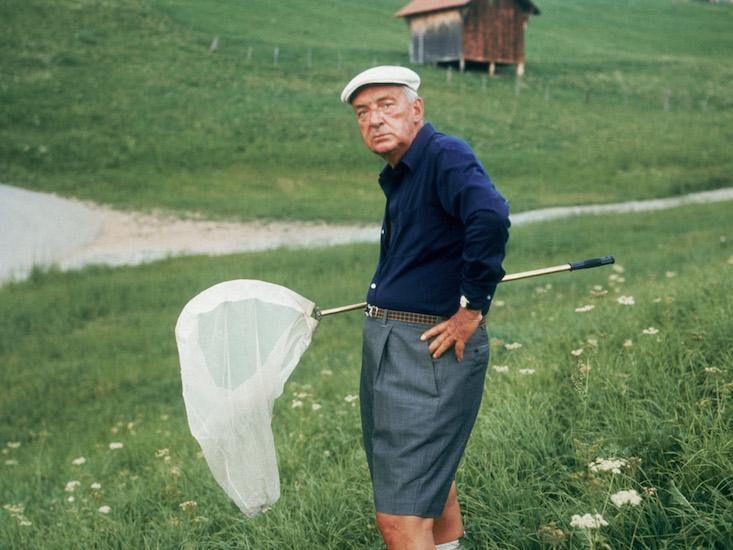by SUSIE NEILSON
 Vladimir Nabokov, circa 1975PHOTO / Horst Tappe / Getty Images
Vladimir Nabokov, circa 1975PHOTO / Horst Tappe / Getty Images
y 1967, Vladimir Nabokov had published 15 novels and novellas and six short story collections. But as he told the Paris Review that year, “It is not improbable that had there been no revolution in Russia, I would have devoted myself entirely to lepidopterology”—the study and classification of butterflies—“and never written any novels at all.” As most Nabokov readers know, the great Russian-American writer had a passion for butterflies. He published 18 science papers in the field of lepidoptery, and from 1942 to 1948 was de facto curator of lepidoptery at Harvard’s Museum of Comparative Zoology.
As a lepidopterist, Nabokov’s most audacious claim was that a South American subfamily of blue butterflies was not the result of a single migration, but the effect of five different migrations to South Asia over the course of 10 million years. Few butterfly experts at the time took Nabokov’s papers seriously. At best, they said, Nabokov was an inspired amateur. But in 2011, a group of scientists at Harvard’s School of Comparative Zoology confirmed Nabokov’s theory about the subfamily of blue butterflies, using genetic sequencing.
For years literary scholars have traced the influence of Nabokov’s lepidoptery on his fiction. Nabokov collected, dissected, and illustrated butterflies with the same skill and precision as he created characters and political cultures. On butterfly-hunting trips across America, Nabokov gathered the material for the famous portrait of road-side America that emerges in Lolita. As Mary Ellen Hannibal wrote in this magazine in 2013, “Butterflies were so entwined with the novel that Nabokov celebrated an especially important find—discovering the first known female of Lycaeides sublivens above Telluride, Colo. in the summer of 1951—by making the town the site of the novel’s final scene.”
Now scholars have given us a comprehensive portrait of Nabokov’s butterfly passions. Stephen H. Blackwell, a professor of Russian literature and language at the University of Tennessee, and his colleague, Kurt Johnson, coauthor of Nabokov’s Blues: The Scientific Odyssey of a Literary Genius, have just published Fine Lines: Vladimir Nabokov’s Scientific Art. The book features 154 of Nabokov’s butterfly illustrations—most of which have never been seen by more than a handful of Nabokov aficionados—alongside 10 essays written by Nabokov specialists and leading scientists. The book will be of inherent interest to Nabokov fans, but Blackwell believes it will resonate with anyone interested in the pursuit of knowledge and beauty.
Nautilus for more
